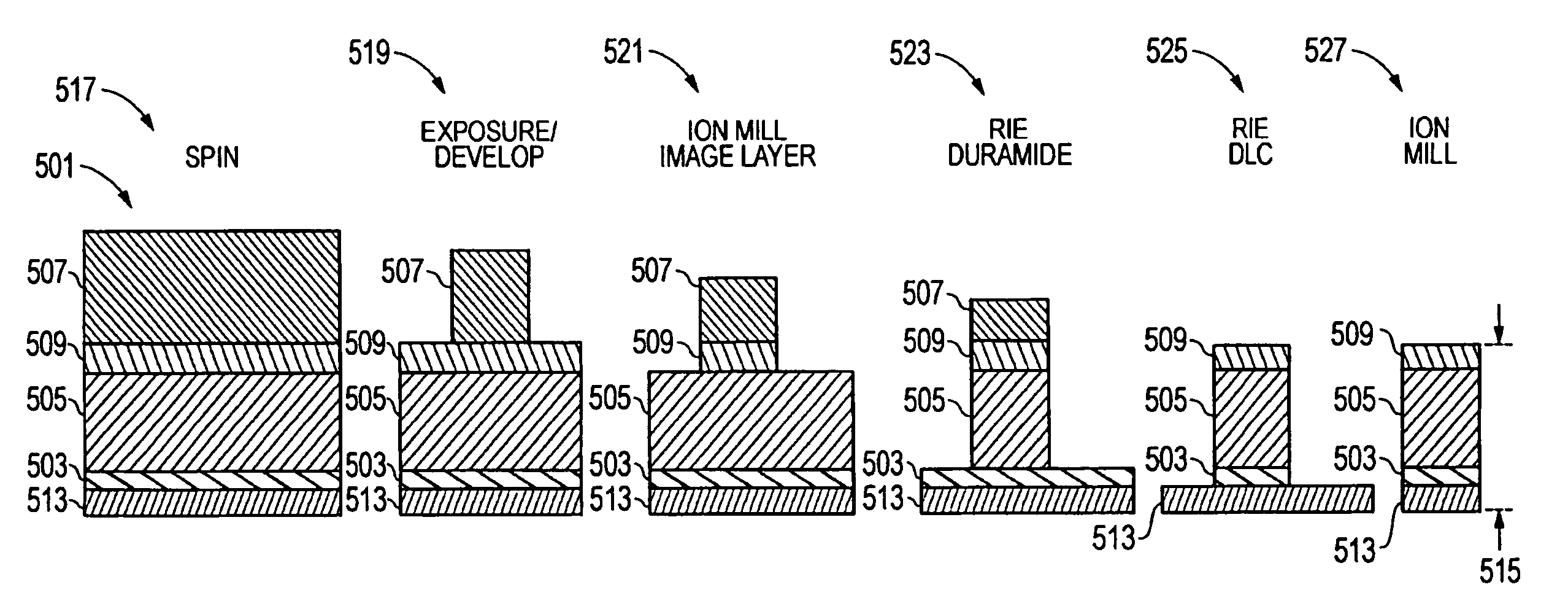Method for sensor edge and mask height control for narrow track width devices
a narrow track width, sensor edge technology, applied in the field of masking, can solve the problems of large junction variation, the current mask process is prone to track width (tw) control and junction definition problems, so as to achieve the effect of minimizing the roughness of the line edg
- Summary
- Abstract
- Description
- Claims
- Application Information
AI Technical Summary
Benefits of technology
Problems solved by technology
Method used
Image
Examples
Embodiment Construction
[0016]Referring to FIGS. 3 and 4, embodiments of the present invention are shown. At its most basic level, the present invention comprises a system and method of forming a mask for a structure.
[0017]In FIG. 3, the mask or image layer 509 is located directly between hydrophilic polymer of acrylamide (e.g., DURAMIDE) 505 and photoresist (e.g., TIS) layers 507. The image layer 509 is RIE-resistant and, in one embodiment, CMP resistant as well. In another embodiment (FIG. 4), the image layer comprises two different image layers 609 and 611. First image layer 609 is located directly between the DLC and DURAMIDE layers 603, 605, and second image layer 611 is located directly between the DURAMIDE and photoresist layers 605, 607.
[0018]In the embodiments of FIGS. 3 and 4, the mask or image layers 509, 611, respectively, may be located directly between the DURAMIDE and photoresist layers 505, 507 and 605, 607, respectively, in order to better control the mask height 515, 615 (far right side o...
PUM
 Login to View More
Login to View More Abstract
Description
Claims
Application Information
 Login to View More
Login to View More - R&D
- Intellectual Property
- Life Sciences
- Materials
- Tech Scout
- Unparalleled Data Quality
- Higher Quality Content
- 60% Fewer Hallucinations
Browse by: Latest US Patents, China's latest patents, Technical Efficacy Thesaurus, Application Domain, Technology Topic, Popular Technical Reports.
© 2025 PatSnap. All rights reserved.Legal|Privacy policy|Modern Slavery Act Transparency Statement|Sitemap|About US| Contact US: help@patsnap.com



